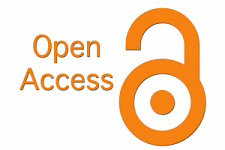Functions of media education and media resources in the training of specialists
Keywords:
Media Education, Communicative, Non-Linguistic UniversitiesAbstract
The article discusses ways of understanding the essential characteristics of media education in the context of training foreign language specialists, it is necessary to refer to the functions, features and types of mass media (mass media – further) and how develop of media literacy and communicative competence in English classes in non-linguistic universities.
References
Adams D., & Hamm M. Media and literacy: Learning in an electronic age—Issues, ideas,
and teaching strategies. (3rd ed.) – Springfield, IL: Charles C. Thomas, 2006.
Aufderheide P. Media Literacy.// A Report of the National Leadership Conference on
Media Literacy. –Aspen Institute, Communications and Society Program, 1992.
Beach R. A web-linked guide to resources and activities// Teachingmedialiteracy.com. New
York: Teachers College Press, 2007.
Beetham H., Sharpe R. An introduction to rethinking pedagogy for a digital age. –
Abingdon, Oxon: Routledge, 2007.
Bedjou A. Using Radio Programs in the EFL Classroom. // English Teaching Forum. 2006,
No 1. –Pp. 28-32.
Bell A. Approaches to Media Discourse. – London, 1996.
https://www.amazon.co.uk › Approaches-Media8. Chun-Chun Yeh. Media Literacy in the English Classrooms. Teaching Trough, With, and
about Media.// www:researchgate.net 307597991. 2019. Доступен.
https://www.researchgate.net/profile/Chun_Chun_Yeh/publication/307597991_Media_li
teracy_in_the_English_classroom 2010
Domenick J. The Dynamics of Mass Communication. – New York: McGraw-Hill series,
–616 c.
Dvorghets O. S. & Shaturnaya Y. A. Developing Students’ Media Literacy in the English
Language Teaching Context. // Procedia - Social and Behavioral Sciences. Language and
Culture: The XXVI Annual International Academic Conference. 27–30 October 2015. –
Pp.192-198.
Gee J.P & Hayes R. (eds.). Language and learning in the digital age. – London: Routledge,
Gilster P. Digital literacy. – New York: Wiley, 1997. – 124 p.
Downloads
Published
Issue
Section
License

This work is licensed under a Creative Commons Attribution-NonCommercial 4.0 International License.
You are free to:
- Share — copy and redistribute the material in any medium or format
- Adapt — remix, transform, and build upon the material
- The licensor cannot revoke these freedoms as long as you follow the license terms.
Under the following terms:
- Attribution — You must give appropriate credit , provide a link to the license, and indicate if changes were made . You may do so in any reasonable manner, but not in any way that suggests the licensor endorses you or your use.
- NonCommercial — You may not use the material for commercial purposes .
- No additional restrictions — You may not apply legal terms or technological measures that legally restrict others from doing anything the license permits








